Honor 8 white or blue. Mobile device batteries differ from each other in their capacity and technology. They provide the electrical charge necessary for their functioning. Information about the make, model and alternative names of a specific
Which still looks interesting today? A comparison of these two affordable Chinese flagships will answer this question.
Appearance of Honor 9 vs Honor 8
Both smartphones look beautiful, flaunting spectacular rear panel made of glass that shimmers when light hits its surface. However, Honor 9, unlike its predecessor, is lined with glass on the back that is curved on both sides. This makes it look a little more attractive. This design decision can be called an improvement, but rather it was done to simply distinguish the new generation of the device from the previous one. The back of Honor 8 is also attractive; it is endowed with a pronounced 2.5D rounding around the perimeter. Both devices get dirty equally, despite the presence of an oleophobic layer. Needs to be wiped constantly back cover or wear a transparent bumper. Among the differences, it is also worth remembering the position of the fingerprint scanner. In Honor 9 it was placed on the front panel under the screen, in the “eight” it is on the back. The convenience of the location of the fingerprint sensor depends on the individual, so it is difficult to give preference to any smartphone in this regard. Both scanners, by the way, work great. There is a 3.5 mm jack in both models, which is good news.
Ergonomics Honor 9 vs Honor 8
In terms of weight and thickness of the case, both models are virtually identical, but in terms of ease of use, a noticeable difference is found. The aforementioned back of the Honor 9 with glass strongly curved on the right and left makes the 2017 flagship feel more pleasant in the palm. However, the disease of glass smartphones has not gone away. Both the new device and last year’s constantly tend to jump out of the hand due to the slippery surface. On the side of Honor 9 there is also a central touch key under the display, which can replace the system buttons. For this reason, there is simply no need for on-screen controls in the new product. In Honor 8, you cannot do without soft keys that eat up space on the screen, and this is a minus.

Display
Honor 8 has a 0.05-inch larger screen, but the difference is so tiny that it’s not noticeable at all. Both IPS matrices demonstrate excellent quality with extreme viewing angles, high picture clarity and sufficient brightness. However, the “nine” clearly shows the excessive saturation of the color palette, shifted to the warm side. The previous model has cooler shades and looks more natural. The resolution used in two cases is the same - Full HD.
Performance of Honor 9 vs Honor 8
Judging by the performance in popular benchmarks, Honor 9 takes the lead in terms of hardware power with a decent advantage. The result in AnTuTu is 146 thousand points versus 98 thousand. However, in real conditions the large gap in the numbers is barely felt. Both devices cope with standard tasks equally well, pleasing with their fast performance. When it comes to demanding games, the 2017 smartphone shows itself in all its glory, surpassing its current opponent. The fact is that the Kirin 960 chip, which is the “heart” of the Honor 9 model, is equipped with a Mali-G71 MP8 graphics subsystem. Compared to this, the Kirin 950 processor with the Mali-T880 MP4 graphics module does not look so impressive, although it is also not weak.Communications
In this regard, Honor 8 has a small but significant advantage. Last year's device was equipped with two radio modules, while the new model lacks this capability. If you use one SIM card, you won’t be able to use another while the first one is busy. For many users this is an important feature. Otherwise, the devices are in balance. Both devices have NFC, Bluetooth, Wi-Fi dual-band and IR emitter modules on board. The connector for synchronization and charging is also identical - . The phones support LTE Cat.6 connection.Sound
The devices do not have separate chips designed to improve audio. However, both Honors are supplemented with various enhancements that significantly affect the sound quality in the headphones. In Honor 8, DTS technology is responsible for this, and in Honor 9, Huawei’s Histen surround sound mode in conjunction with the Honor Pyrity equalizer. Although even without any settings, the new device sounds better than the previous model, the sound is cleaner and more detailed. The “nine” brings more pleasure in listening to music, and music lovers should take a closer look at this nuance. In the sound output through the main speaker, the gap in quality is not so large, but it is there, and again it is not in favor of Honor 8, since its sound is flatter and the volume is lower.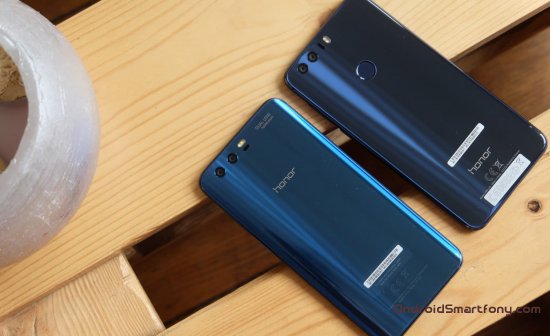
Autonomy Honor 9 vs Honor 8
The gadgets differ in battery capacity - 3000 mAh versus 3200 mAh, the Honor 8 has slightly less power, which allowed its rival to overtake it in terms of operating time. If the Honor 9 battery is enough for a whole day of mixed loads, then the predecessor in this mode will need a power outlet towards the evening. But the reason is not only the battery life; the level of efficiency of the processor also decides a lot. Honor 9 has a 14nm chipset, while Honor 8 has a 16nm chipset. Both devices can be charged quickly using a 9V/2A adapter. But the new product takes a little less time to complete this procedure.Cameras Honor 9 vs Honor 8
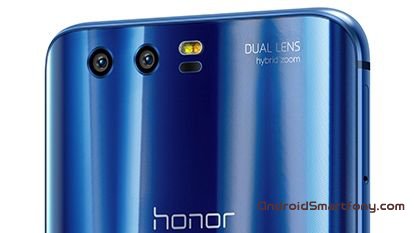
The back panel of both smartphones is decorated with dual cameras. On paper, the Honor 9 certainly has a better photo module - 20 + 12 megapixels with an f/2.2 aperture. However, in practice, the superiority of the “nine” is not so obvious. For example, Honor 8 with its 12 + 12 megapixel camera and f/2.2 aperture sometimes takes pictures during the day with more natural color rendition, and in the absence of light it can produce better detail. In other situations, Honor 9 is more pleasing. Often the frames do not differ in quality at all. Because of this, it is unlikely that it will be possible to identify the leader in terms of photo capabilities; both phones are good. Perhaps, we note the presence of a hybrid zoom with 2x magnification in the new model, which is not present in Honor 8.
Conclusion
The developers have worked hard over the year since the release of Honor 8, because the successor to this smartphone has acquired many of the improvements we need. Honor 9 beats the 2016 model on almost all fronts. In isolated cases, today's rivals go head-to-head, and this once again proves that Honor 8 is an excellent device that is worth its money. If you don’t own it, then it’s better to buy a new one, although it costs more. With Honor 9 you get top-end hardware, great sound in headphones, good battery life and an excellent camera.Make and model
Information about the make, model, and alternative names of the specific device, if available.
Dimensions: 70.9 x 147.3 x 7.45 mm | Dimensions: 71 x 145.5 x 7.45 mm | Dimensions: 72.94 x 147.2 x 7.6 mm |
|
| Alternative names | Glory 9 STF-AL00 STF-AL10 STF-L09 | FRD-AL00 FRD-AL10 FRD-DL00 FRD-L04 FRD-L09 FRD-L19 | Honor 8 Youth PRA-AL00 PRA-AL00X PRA-TL10 |
Design
Information about the dimensions and weight of the device, presented in different units of measurement. Materials used, colors offered, certificates.
| Width | 70.9 mm 7.09 cm 0.23 ft 2.79in | 71 mm 7.1 cm 0.23 ft 2.8in | 72.94 mm 7.29 cm 0.24ft 2.87in |
| Height | 147.3 mm 14.73 cm 0.48ft 5.8in | 145.5 mm 14.55 cm 0.48ft 5.73in | 147.2 mm 14.72 cm 0.48ft 5.8in |
| Thickness | 7.45 mm 0.75 cm 0.02ft 0.29in | 7.45 mm 0.75 cm 0.02ft 0.29in | 7.6 mm 0.76 cm 0.02ft 0.3in |
| Weight | 155 g 0.34lbs 5.47 oz | 153 g 0.34lbs 5.4 oz | 147 g 0.32lbs 5.19 oz |
| Volume | 77.8 cm³ 4.73 in³ | 76.96 cm³ 4.67 in³ | 81.6 cm³ 4.96 in³ |
| Colors | Blue Grey Golden Black Orange Red Yellow | Golden Blue White Black Pink | Black White Blue Golden |
| Materials for making the case | Glass Metal | Metal Glass | Aluminium alloy Plastic |
SIM card
The SIM card is used in mobile devices to store data that certifies the authenticity of mobile service subscribers.
Mobile networks
A mobile network is a radio system that allows multiple mobile devices to communicate with each other.
| GSM | GSM 850 MHz GSM 900 MHz GSM 1800 MHz GSM 1900 MHz | GSM 850 MHz GSM 900 MHz GSM 1800 MHz GSM 1900 MHz | GSM 850 MHz GSM 900 MHz GSM 1800 MHz GSM 1900 MHz |
| CDMA | CDMA 800 MHz | CDMA 800 MHz (FRD-AL00; FRD-AL10) | CDMA 800 MHz (PRA-AL00; PRA-AL00X; PRA-TL10) |
| TD-SCDMA | TD-SCDMA 1880-1920 MHz TD-SCDMA 2010-2025 MHz | TD-SCDMA 1880-1920 MHz TD-SCDMA 2010-2025 MHz | TD-SCDMA 1880-1920 MHz (PRA-AL00; PRA-AL00X; PRA-TL10) TD-SCDMA 2010-2025 MHz (PRA-AL00; PRA-AL00X; PRA-TL10) |
| UMTS | UMTS 850 MHz UMTS 900 MHz UMTS 1900 MHz UMTS 2100 MHz | UMTS 850 MHz UMTS 900 MHz UMTS 1900 MHz UMTS 2100 MHz UMTS 1700/2100 MHz (FRD-AL00; FRD-AL10; FDR-L04) | UMTS 900 MHz UMTS 2100 MHz |
| LTE | LTE 850 MHz LTE 900 MHz LTE 1800 MHz LTE 2100 MHz LTE-TDD 1900 MHz (B39) LTE-TDD 2300 MHz (B40) LTE-TDD 2500 MHz (B41) LTE-TDD 2600 MHz (B38) | LTE 1800 MHz LTE 2100 MHz LTE 2600 MHz LTE-TDD 1900 MHz (B39) LTE-TDD 2300 MHz (B40) LTE-TDD 2500 MHz (B41) LTE-TDD 2600 MHz (B38) LTE 1700/2100 MHz (FRD-AL00; FRD-AL10; FDR-L04) LTE 900 MHz (FRD-DL00) LTE 850 MHz (FDR-L04) LTE 700 MHz Class 17 (FDR-L04) LTE 1900 MHz (FDR-L04) LTE 700 MHz (B12) (FDR-L04) | LTE 800 MHz LTE 1800 MHz LTE 2100 MHz LTE 2600 MHz LTE 850 MHz (PRA-AL00; PRA-AL00X; PRA-TL10) |
Mobile communication technologies and data transfer speeds
Communication between devices on mobile networks is carried out using technologies that provide different data transfer rates.
Operating system
An operating system is a system software that manages and coordinates the operation of hardware components in a device.
SoC (System on Chip)
A system on a chip (SoC) includes all the most important hardware components of a mobile device on one chip.
| SoC (System on Chip) | Huawei HiSilicon KIRIN 960 | Huawei HiSilicon KIRIN 950 | Huawei HiSilicon KIRIN 655 |
| Technological process | 16 nm | 16 nm | 16 nm |
| Processor (CPU) | 4x 2.36 GHz ARM Cortex-A73, 4x 1.84 GHz ARM Cortex-A53 | 4x 2.3 GHz ARM Cortex-A72, 4x 1.8 GHz ARM Cortex-A53 | 4x 2.1 GHz ARM Cortex-A53, 4x 1.7 GHz ARM Cortex-A53 |
| Processor size | 64 bit | 64 bit | 64 bit |
| Instruction Set Architecture | ARMv8-A | ARMv8-A | ARMv8-A |
| Number of processor cores | 8 | 8 | 8 |
| CPU clock speed | 2360 MHz | 2300 MHz | 2100 MHz |
| Graphics Processing Unit (GPU) | ARM Mali-G71 MP8 | ARM Mali-T880 MP4 | ARM Mali-T830 MP2 |
| Number of GPU cores | 8 | 4 | 2 |
| GPU clock speed | 1037 MHz | 900 MHz | 900 MHz |
| Volume random access memory(RAM) | 4 GB 6 GB | 3 GB 4 GB | 3 GB 4 GB |
| Type of random access memory (RAM) | LPDDR4 | LPDDR4 | LPDDR3 |
| Number of RAM channels | Dual channel | Dual channel | Dual channel |
| RAM frequency | 1866 MHz | 1333 MHz | 933 MHz |
| i6 coprocessor | - | - |
Built-in memory
Each mobile device has built-in (non-removable) memory with a fixed capacity.
Screen
The screen of a mobile device is characterized by its technology, resolution, pixel density, diagonal length, color depth, etc.
| Type/technology | IPS | IPS | IPS |
| Diagonal | 5.15in 130.81 mm 13.08 cm | 5.2in 132.08 mm 13.21 cm | 5.2in 132.08 mm 13.21 cm |
| Width | 2.52in 64.13 mm 6.41 cm | 2.55in 64.75 mm 6.48 cm | 2.55in 64.75 mm 6.48 cm |
| Height | 4.49in 114.01 mm 11.4 cm | 4.53in 115.12 mm 11.51 cm | 4.53in 115.12 mm 11.51 cm |
| Aspect Ratio | 1.778:1 16:9 | 1.778:1 16:9 | 1.778:1 16:9 |
| Permission | 1080 x 1920 pixels | 1080 x 1920 pixels | 1080 x 1920 pixels |
| Pixel Density | 428 ppi 168ppcm | 424 ppi 166 ppcm | 424 ppi 166 ppcm |
| Color depth | 24 bit 16777216 flowers | 24 bit 16777216 flowers | 24 bit 16777216 flowers |
| Screen area | 70.24 % | 72.39 % | 69.65 % |
| Other characteristics | Capacitive Multi-touch Scratch resistance | Capacitive Multi-touch Scratch resistance | Capacitive Multi-touch |
| Corning Gorilla Glass 3 2.5D curved glass screen LTPS (Low Temperature PolySilicon) | 2.5D curved glass screen LTPS (Low Temperature PolySilicon) 96% NTSC | 2.5D curved glass screen GFF full lamination |
Sensors
Different sensors perform different quantitative measurements and convert physical indicators into signals that a mobile device can recognize.
Main camera
The main camera of a mobile device is usually located on the back of the body and is used for taking photos and videos.
| Sensor model | - | Sony IMX286 Exmor RS | - |
| Sensor type | CMOS | CMOS BSI | CMOS |
| Diaphragm | f/2.2 | f/2.2 - 16.0 | f/2.2 |
| Focal length | 3.95 mm | - | - |
| Flash type | Double LED | Double LED | LED |
| Image Resolution | 3968 x 2976 pixels 11.81 MP | 3968 x 2976 pixels 11.81 MP | 3968 x 2976 pixels 11.81 MP |
| Video resolution | 3840 x 2160 pixels 8.29 MP | 1920 x 1080 pixels 2.07 MP | 1920 x 1080 pixels 2.07 MP |
| Video - frame rate/frames per second. | 30fps | 30fps | 30fps |
| Characteristics | Autofocus Continuous shooting Digital zoom Geographical tags Panoramic photography HDR shooting Touch Focus Face recognition White Balance Adjustment ISO Setting Exposure compensation Self-timer Scene Selection Mode | Autofocus Continuous shooting Digital zoom Digital image stabilization Geographical tags Panoramic photography HDR shooting Touch Focus Face recognition White Balance Adjustment ISO Setting Exposure compensation Self-timer Scene Selection Mode Macro mode RAW | Autofocus Continuous shooting Digital zoom Geographical tags Panoramic photography HDR shooting Touch Focus Face recognition White Balance Adjustment ISO Setting Exposure compensation Self-timer Scene Selection Mode |
| Phase detection Laser autofocus Contrast autofocus Depth autofocus 2x hybrid zoom Secondary rear camera - 20 MP (monochrome) Aperture size - f/2.2 (#2) | Sensor size - 1/2.9" Pixel size - 1.25 μm Leica camera Laser autofocus 6-element lens Focal length (35 mm equivalent) - 27 mm Secondary rear camera - 12 MP (monochrome) 720p@120fps | Pixel size - 1.25 μm Phase detection |
Additional camera
Additional cameras are usually mounted above the device screen and are used mainly for video conversations, gesture recognition, etc.
Audio
Information about the type of speakers and audio technologies supported by the device.
Radio
The radio of the mobile device is a built-in FM receiver.
WiFi
Wi-Fi is a technology that provides wireless communication for transmitting data over close distances between various devices.
USB
USB (Universal Serial Bus) is an industry standard that allows different electronic devices to exchange data.
Connecting devices
Information about other important connection technologies supported by your device.
Browser
A web browser is a software application for accessing and viewing information on the Internet.
Video file formats/codecs
Mobile devices support different video file formats and codecs, which respectively store and encode/decode digital video data.
Battery
Mobile device batteries differ from each other in their capacity and technology. They provide the electrical charge necessary for their functioning.
| Capacity | 3200 mAh | 3000 mAh | 3000 mAh |
| Type | Li-polymer | Li-polymer | |
| 2G talk time | - | 20 h 1200 min 0.8 days | 36 h 2160 min 1.5 days |
| 2G latency | - | 420 h 25200 min 17.5 days | 524 h 31440 min 21.8 days |
| 3G talk time | - | 20 h 1200 min 0.8 days | 21 o'clock 1260 min 0.9 days |
| 3G latency | - | 420 h 25200 min 17.5 days | 670 h 40200 min 27.9 days |
| 4G latency | - | 420 h 25200 min 17.5 days | - |
| Adapter output power | 5 V / 2 A 9 V / 2 A | 9 V / 2 A | 5 V / 1 A |
| Characteristics | Fast charging Fixed | Fast charging Fixed | Fixed |
A number of objective prerequisites for trying something new.
Despite the fact that the new inexpensive handsome guy Huawei Honor 8 fell into my hands even before the presentation, I deliberately postponed its review until later. It was important for me to understand whether chinese smartphone, which is actually half the price of an American, wipe his nose.
As it turns out, the G8 has plenty of features that make it a desirable purchase. Highlighted ten most interesting.
1. Great design from the future of Apple
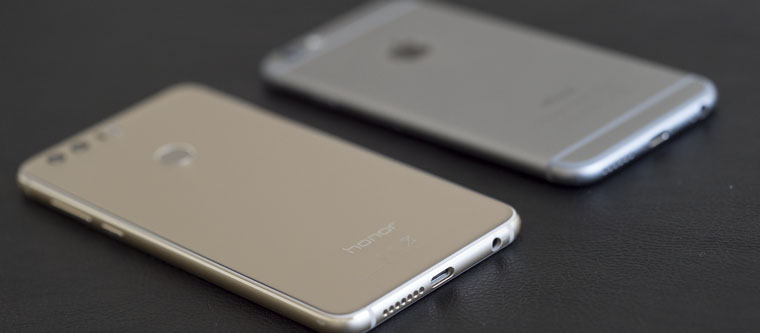
Experts, analysts, insiders and others are confident that after the iPhone 7, Apple will abandon the two-year smartphone update cycle in favor of a one-year one. If this information turns out to be true, already in 2017 we will see the iPhone 8, the main feature of which will be the abundance of glass in the body design.
Honor 8 offers something similar today. The front and back sides of the smartphone are covered with protective glass, which not only looks great, but also gives interesting tactile sensations.
2. Dual camera, available only to phablets
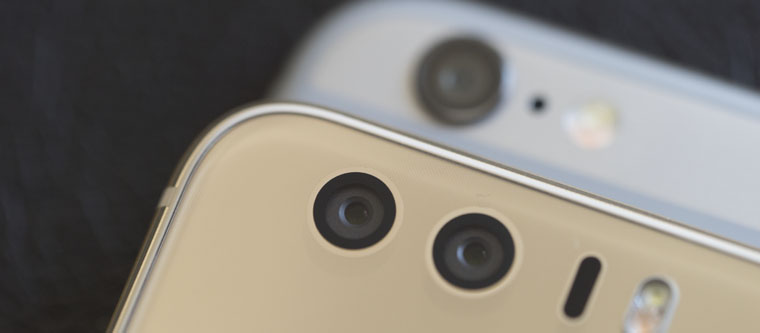
Apple began differentiating the iPhone since the days of the Six. Then the company released two smartphones in different sizes, which also differed in functionality. The phablet was equipped optical stabilization, but his younger brother is not.
The manufacturer continued this with the release of the “seven”. Only now the Plus version has been equipped with a cool dual camera with a number of interesting features that are not available to fans of compact smartphones.
At the same time, Huawei offers a similar solution in a relatively compact form factor, making it an excellent alternative to the stripped-down iPhone 7.
3. There is an output for standard 3.5 headphones
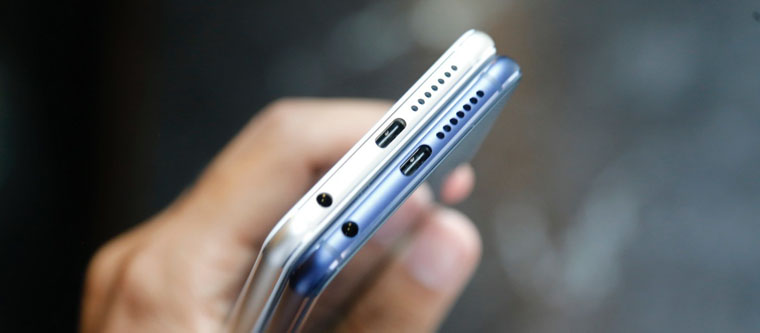
The vast majority of users perceived the lack of a traditional 3.5 audio output in the iPhone 7 with an incredible amount of skepticism. Of course, the interface has already outlived its usefulness, but not everyone can abandon it too abruptly.
I’m sure, like me, you also have two or three pairs of favorite 3.5 headphones that you want to fully use - without adapters and other “crutches”. Honor 8 gives you this opportunity.
4. Equipment control panel with infrared port
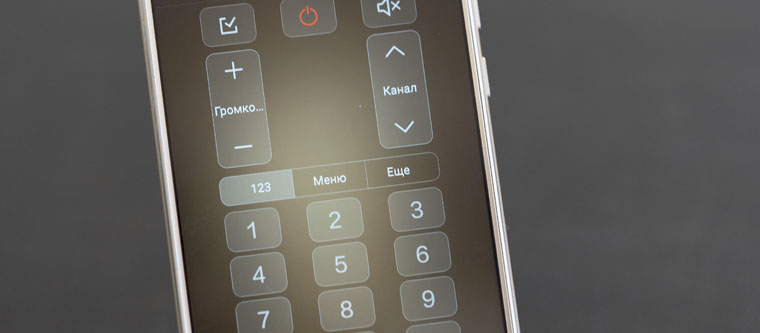
No iPhone had an IR blaster. Of course, he did not appear in the “seven”. Apple is confident that this technology is hopelessly outdated. And there is some truth in this - using it to transfer files from device to device, which was popular in the 90s, is absolutely pointless.
However, the infrared port is great for controlling various household appliances. For these purposes, Huawei and special application preinstalled - the number of devices it supports has been successfully tested by several electronics supermarkets.
5. Larger screen with comparable dimensions
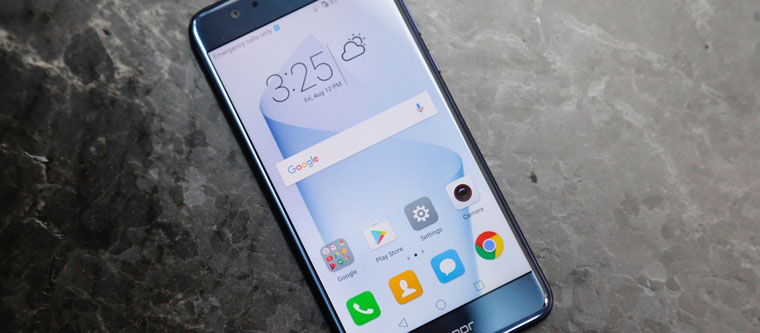
I have no idea why you need to know the dimensions of the case from edge to edge and its weight. Instead, I’ll note that the device fits quite well in the hand - certainly no worse than the iPhone 6s, which is almost exactly the same as the iPhone 7. The dimensions are comparable, so their perception is extremely similar.
At the same time, Honor 8 has a larger screen, which is a definite plus - the manufacturer managed use space efficiently front panel of the smartphone.
6. The camera module does not protrude above the body

Because of this, the mobile device is not only looks more mature in terms of design, but also doesn’t play “swing” with you if you put it on the table.
7. Fashionable deep blue and white body colors

The device I tested was gold, but it also comes in black, white, and blue. The last couple are especially interesting.
Even six months before the release of the iPhone 7, insiders said that the device would receive two new colors - black and blue. Instead of the second, it surprised us with a couple of options for the first - a strange solution, and a competitive option in this regard looks clearly better.
With presentation of ceramic Apple Watch Series 2 in white, many realized that this is the color of the smartphone they want to hold in their hands. Nothing like this can happen with the iPhone, but a competitor offers it all today.
8. Convenient location of the fingerprint sensor

The front-facing Touch ID fingerprint sensor was only useful on the iPhone 5s. Already with the advent of the “six” I repeatedly wondered why not move it to a much more convenient place on the back of the case.
And Huawei agrees with me - unlocking a smartphone with it in this position is very convenient.
9. Dual SIM cards or memory card up to 256 GB

Despite the abundance of rumors that told us about the possibility of working with two SIM cards in the iPhone 7, none of them came true.
It’s a pity, because switching between operators when traveling abroad, as well as within the country, is very, very convenient. Eg, during regular business trips I very often come across a situation where one operator offers high-quality Internet at a reasonable cost, and the second offers normal communication. You have to choose one thing.
Honor 8 in this case offers both the ability to use two SIMs and the option to replace one of them with a memory card up to 256 GB.
10. Low cost without overpayments for the name

Honor 8 will cost RUB 27,990 , you can get a pair for the price of an iPhone 7- blue for yourself and white for your other half. You won't be disappointed.
Subjective objectivism - instead of conclusion
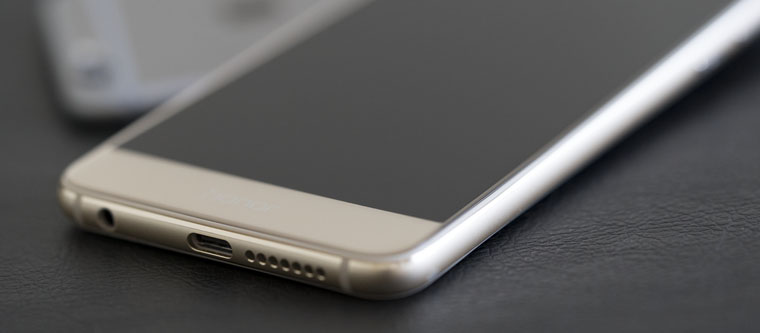
In my use cases, the inexpensive new product from Huawei turned out to be an excellent alternative to the iPhone. Of course, due to duty I will still have to take the “seven”, but I will try to supplement it with this inexpensive alternative. American “black onyx” and white Chinese- not a bad pair, right?
Want to know more? Cm.
Huawei is the most famous Chinese brand in both the domestic and European markets. The manufacturer has long occupied its niche and delights loyal fans with new high-tech gadgets. Relatively recently, the company released a rather controversial Honor 8 line, combining as many as three smartphones. Each from its own price category. As a result, a pressing question arose. Lite? Pro version not considered because it is quite expensive. To do right choice, you need to comprehensively study the characteristics of each model and only then decide whether it is worth overpaying for the “full” version. In the meantime, let’s remember the main milestones in the development of Huawei.
"From rags to riches", or the success story of Huawei
The Chinese brand was born in 1987. At that time the company was engaged in the development and production of various network equipment. Its modems are well known to everyone. But in addition to these devices, devices for organizing wireless communication, network cabinets, antennas and other equipment. The company tried its hand at producing smartphones in 2009. Their first model was the Huawei U8230 communicator. It has become widespread in the Republic of Belarus thanks to the local operator cellular communication Life, which offered the gadget in installments on very favorable terms. But a lot of water has passed under the bridge since then, and the current Huawei Honor 8 and Honor 8 Lite cannot be compared with the first smartphone.
It is worth noting that throughout the development and formation of Huawei, some kind of scandal accompanied it. Accusations of industrial espionage were especially common. However, the cunning company shifted all responsibility onto “unscrupulous employees.” Thus, none of the scandals harmed her in any way. It would be stupid not to take advantage of the fruits of the activities of these same “unscrupulous employees.” There is an opinion that it was through espionage that the company managed to “rise” and conquer a decent portion of mobile market. Let them think what they want, but fresh Huawei smartphones Honor 8 and Honor 8 Lite say the opposite. The gadgets turned out to be decent. Now let's compare these two devices.
Honor 8 skin
The Huawei Honor 8 smartphone is made of metal and lined with glass panels. He looks beautiful. But glass collects fingerprints very quickly. It doesn't really help even on both sides of the device. The entire front part is occupied by the screen. There are no control buttons underneath it. They are located on the screen, and the order in which they are displayed can be customized as users wish. On the back panel there is a dual camera module, a two-sector LED flash and a fingerprint scanner. The speaker is located at the end. The second gap for him is actually fake. At the bottom end there is also a connector for connecting charging and a conversational microphone. On the top there is the usual 3.5 jack for headphones. The smartphone screen is covered with protective glass with a 2.5D effect. Typical "average" design.
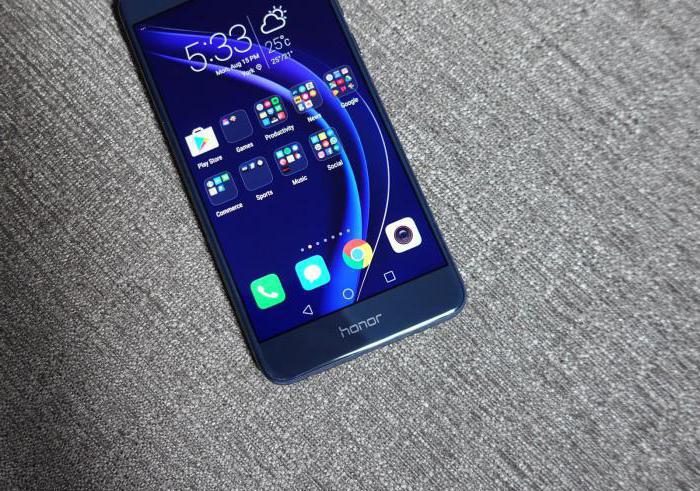
Honor 8 Lite look
What is the design difference between the lightweight version of the G8? The Honor 8 Lite smartphone is made of plastic and also covered with glass panels. But unlike its “big brother”, its body, both back and front, is devoid of any grease-repellent coating. The design of the rear panel is also different, since there is no dual camera here. And the flash is one color. Which also somewhat affects appearance gadget. Otherwise, this is the same “eight”, only in a slightly simplified case. But this does not mean that the quality of assembly and materials has suffered at least a little. Everything is exactly at the same level. This is a characteristic feature of Huawei products. By the way, Lite version deprived protective glass on the screen. Therefore, you will have to use it with a certain degree of caution. Or better yet, buy it altogether protective film or glass.
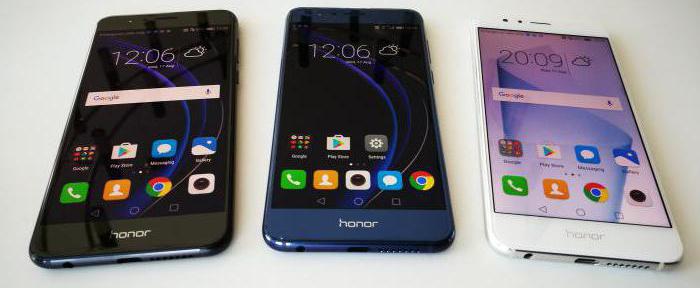
Honor 8 performance
The Huawei Honor 8 smartphone is equipped with an eight-core 64-bit HiSilicon Kirin 950 processor manufactured by Huawei, which operates at a frequency of 2.3 gigahertz. This is a pretty nimble and quite modern “stone”. The amount of RAM is 4 gigabytes. Its modules are considered energy efficient because they use multi-channel mode. This made it possible to increase both the performance and autonomy of the entire hardware platform. The advanced Mali T-880 MP4 chip is responsible for the graphics. It fully supports OpenGL and DirectX. Thanks to this, there are no problems with games for the smartphone. Even in such “heavyweights” as World of Tanks Blitz, the number of frames per second does not drop at all. And this is good. In addition, the smartphone can easily handle Full HD video playback in MKV format. The amount of memory available to the user is 64 gigabytes. But it is possible to install a memory card up to 256 gigabytes.
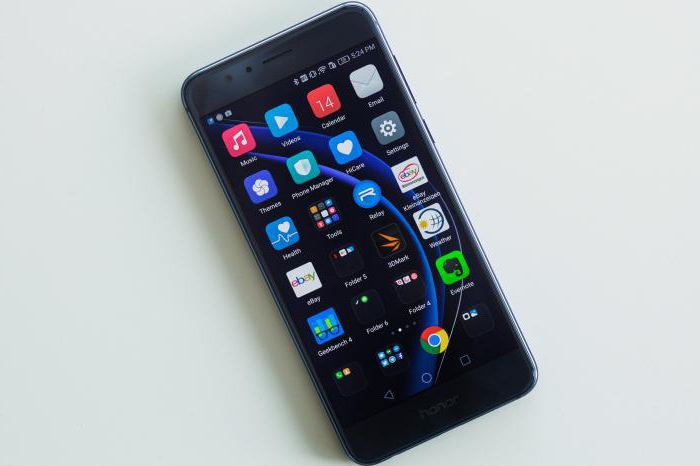
Honor 8 Lite performance
Now let's compare Honor 8 and Honor 8 Lite in performance. The "light" version has the same HiSilicon, but the 655th model with clock frequency 2.1 gigahertz. This processor is a little slower than in a regular G8, but its performance is quite impressive. The amount of RAM and its type are exactly the same as in the more advanced model. And here GPU a bit different. But it also supports all the necessary technologies. It's just that the maximum core frequency is slightly different. In any case, even the power of the simplified version is quite enough for any modern games. Volume internal storage equal to 32 gigabytes. Possibility of installing a card MicroSD memory there too. And the maximum volume is identical - 256 gigabytes. That is, there are no significant differences in performance.

Honor 8 cameras
It's time to figure out who is better in terms of cameras. Honor 8 or Honor 8 Lite? To do this, you need to understand one fact: in a regular eight, the main camera is represented by a two-module sensor. Each of them has 12 megapixels. The first is used for photographing in-focus objects and recording video, while the second lens is responsible for processing the background. This is what allows you to create a beautiful blur effect. But much more valuable is what is completely manual mode shooting and the ability to save photos in RAW format. The quality of the pictures is simply excellent. With the ISO and white balance set correctly, even when shooting at night, artifacts are minimal. Front-camera is represented by an 8-megapixel module with an aperture of 2.2. There is no flash, but the screen is used instead. The quality of the photos is satisfactory. It is quite enough for selfies and conversations on Skype. Honor 8 has such cameras. Their characteristics are almost flagship.
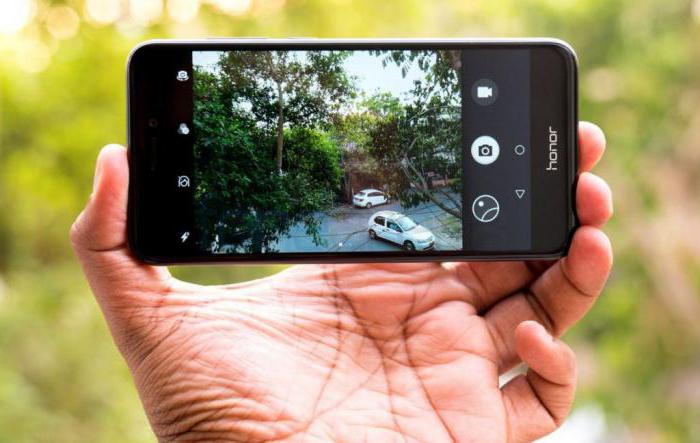
Cameras Honor 8 Lite
Now let's look at the cameras of Honor 8 Lite. The characteristics of the main module indicate that it has 13 megapixels, a complex optical system and a 2.2 aperture. But the most valuable thing is the pixel size. Here it is equal to 1.25 microns. This allows you to achieve a higher quality image. There is only one module here. While the usual “eight” flaunts two. But this does not mean that the quality of the photos is worse. There just won't be an artistically blurred background. There is also limited manual camera control and no ability to save images in RAW. Thus, the camera is no worse. The front module here is exactly the same as that of the “full” version: 8 megapixels, 2.2 aperture, wide-angle lens. The quality of photos from the front sensor is acceptable. It is quite possible to take photographs of yourself for social networks. It will also be very comfortable to communicate via Skype. 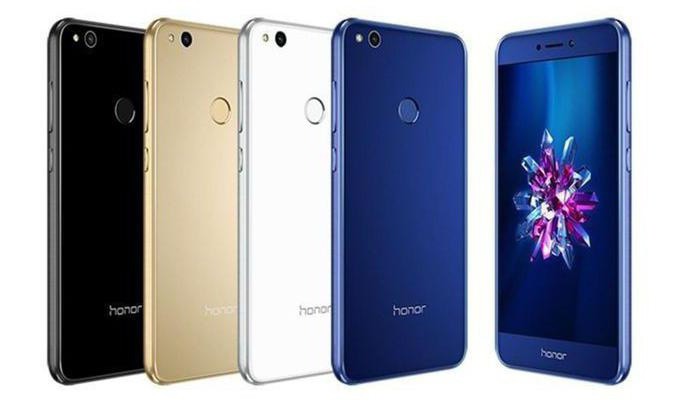
Comparison of autonomy
Comparing Honor 8 and Honor 8 Lite in terms of autonomy obviously cannot be “fair”. Smartphones, although similar, are in different weight categories. Both devices are equipped with a 3000 mAh battery. The only difference is that the “full” version has fast charging, but Lite doesn’t have it. With the same battery capacity, both devices have different performance. And this could not but affect time battery life. As you might expect, the “light” version lasts a couple of hours longer. It is a little weaker, but more autonomous. If a regular eight is capable of playing Full HD video at maximum screen brightness for 8-9 hours, then the Lite playback time is 10-11 hours. In other tests the difference is exactly the same. If long-term operation of your smartphone without recharging is important to you, then choose the Lite version of the device. The situation with autonomy is much worse for Honor 8. The characteristics still have an effect.
Finally
So, what should you choose - Honor 8 or Honor 8 Lite? The difference in price is noticeable. The conclusion suggests itself: if you are not a fan of blurred backgrounds in images and the metal body does not play a noticeable role for you, then it is better to choose the lightweight version of the smartphone. The difference in performance is minimal, but there is an increase in battery life. And for many, the last factor may be decisive. Overpay for dual camera(which may turn out to be useless) and the metal case is not worth it. Even the Lite version can satisfy the needs of any user. After all, the quality of both models is no different.
